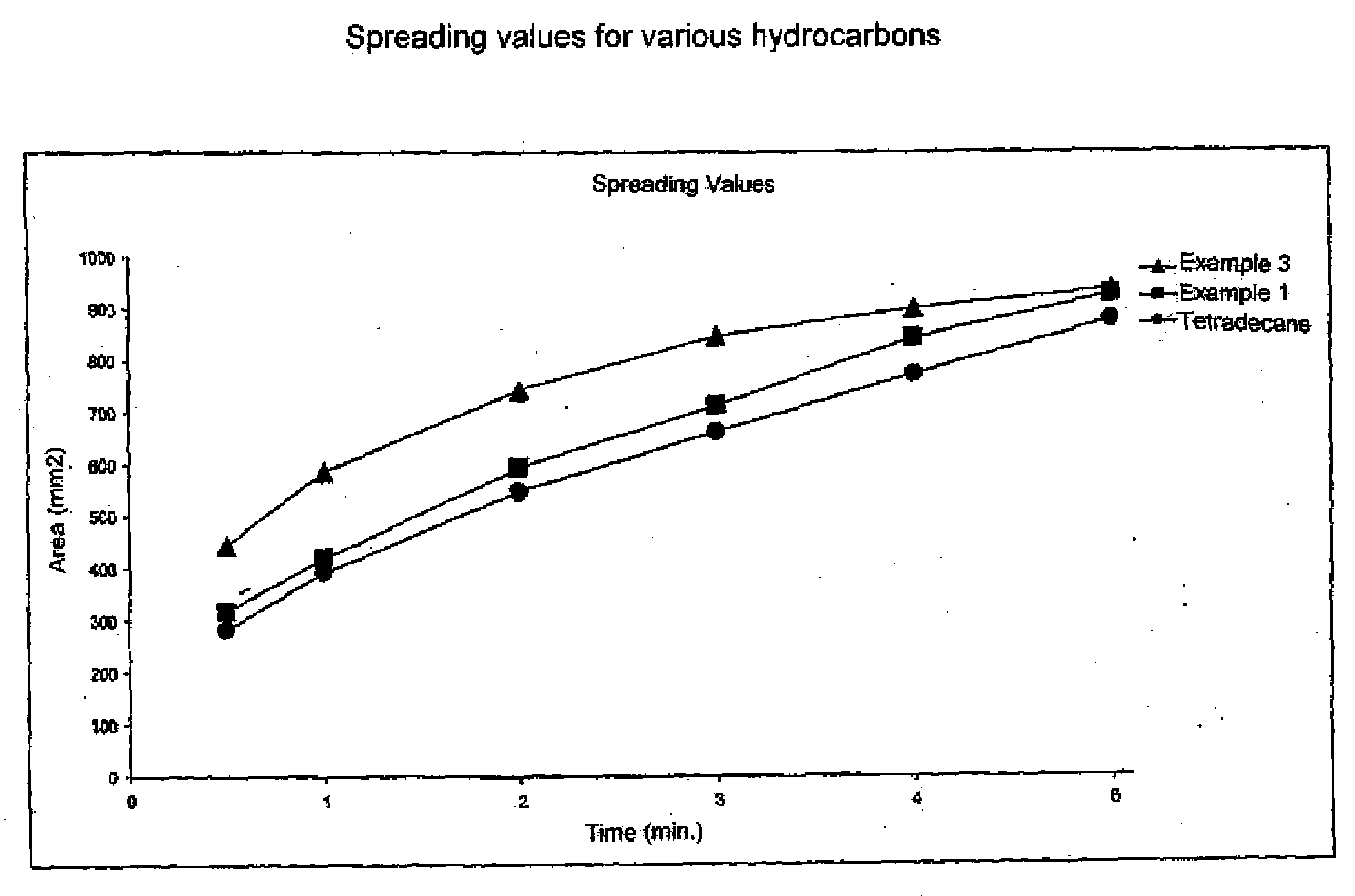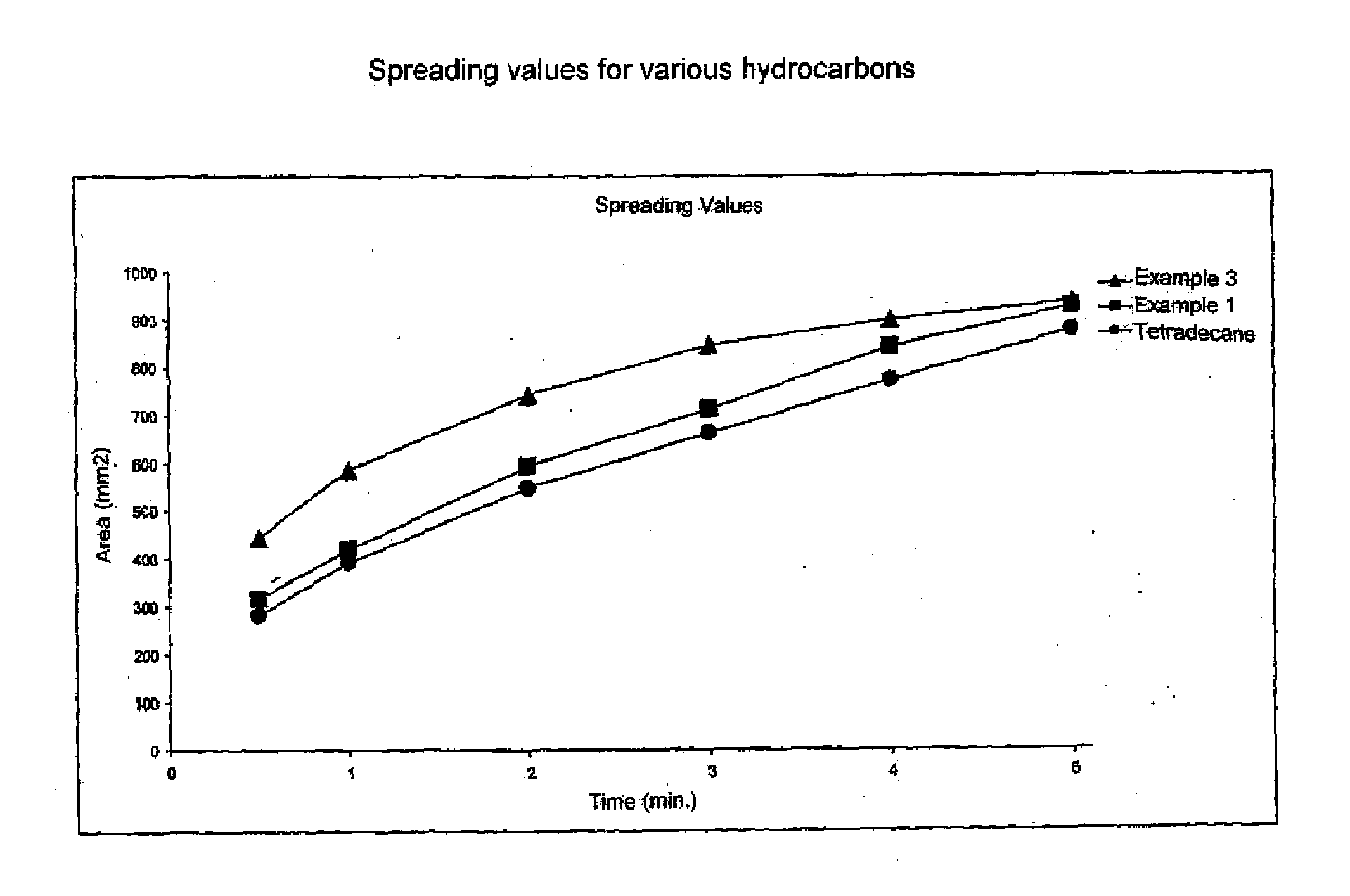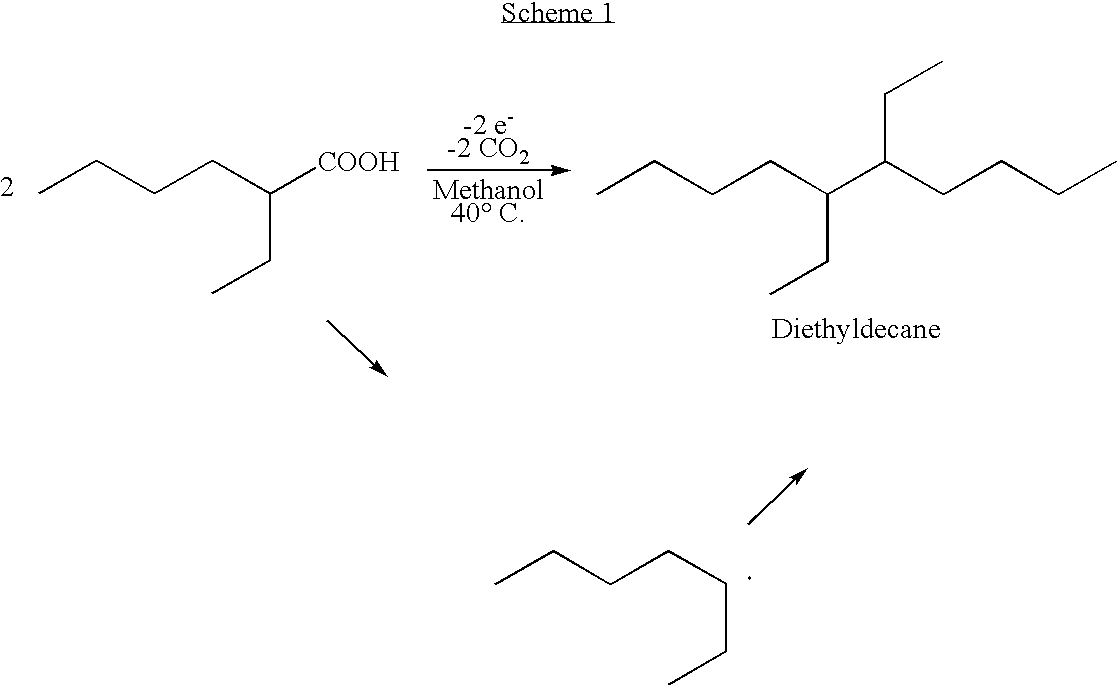Emollients and Cosmetic Compositons Based on Specific Branched Hydrocarbons
a technology of branched hydrocarbons and emollients, applied in the field of cosmetic compositions, can solve the problems of difficult characterization of mixtures, large number of different single components, and difficult to ascertain contributions to the spreading ability, and achieve good spreading qualities in cosmetics, the effect of enhancing the yield
- Summary
- Abstract
- Description
- Claims
- Application Information
AI Technical Summary
Benefits of technology
Problems solved by technology
Method used
Image
Examples
example 1
[0049]Electrolysis was carried out in an undivided 200 ml beaker cell. Two platinum sheet electrodes with a surface area of 1 cm2 per electrode were positioned such that the distance between the electrodes was 1-3 mm. The electrodes were connected to a power supply (3 A / 30 V). 40 g (0.28 mol) of ethylhexanoic acid, 2.5 g of sodium methanolate (0.014 mol. 30% in methanol) and 4.2 g of water were placed in the beaker cell and made up to 150 ml with methanol. The solution was electrolyzed with a constant current of 0.5 A while being stirred, a voltage of 26 V being required for this purpose. The cell was cooled with ice / water, such that a temperature of 40° C. was established. After 15 hours, electrolysis was terminated. A colorless product was produced as a second phase. Yield amounts to 16.0 g. Gas chromatographic investigation of the product revealed a diethyldecane content of >95% (see scheme).
example 2
[0050]Electrolysis was carried out in an undivided 200 ml beaker cell. Two platinum sheet electrodes with a surface area of 1 cm2 per electrode were positioned such that the distance between the electrodes was 1-3 mm. The electrodes were connected to a power supply (3 A / 30 V). 40 g (0.28 mol) of Cekanoic C8 (from Exxon), 2.5 g of sodium methanolate (0.014 mol, 30% in methanol) and 4.2 g of water were placed in the beaker cell and made up to 150 ml with methanol. The solution was electrolyzed with a constant current of 0.5 A while being stirred, a voltage of 26 V being required for this purpose. The cell was cooled with ice / water, such that a temperature of 40° C. was established. After 15 hours, electrolysis was terminated. A colorless product was produced as a second phase. Gas chromatographic investigation of the product revealed a content of >95% of branched C14 hydrocarbon comprising several isomers with methyl branches. These methyl branches have the same distribution pattern a...
example 3
[0051]Electrolysis was carded out in an undivided 200 ml beaker cell. Two platinum sheet electrodes with a surface area of 1 cm2 per electrode were positioned such that the distance between the electrodes was 1-3 mm. The electrodes were connected to a power supply (3 A / 30 V). 23 g (0.16 mol) of ethylhexanoic acid, 18.5 g (0.16 mol) of hexanoic acid, 2.9 g of sodium methanolate (0.016 mol, 30% in methanol) and 4.2 g of water were placed in the beaker cell and made up to 150 ml with methanol. The solution was electrolyzed with a constant current of 0.4 A while being stirred, a voltage of 26 V being required for this purpose. The cell was cooled with ice / water such that a temperature of 40° C. was established. After 15 hours, electrolysis was terminated. A colorless product was produced as a second phase. Yield amounts to 18.5 g. Gas chromatographic investigation of the product revealed a mixture of three different hydrocarbons with a total content >95%. The three hydrocarbon substance...
PUM
| Property | Measurement | Unit |
|---|---|---|
| Current density | aaaaa | aaaaa |
| Temperature | aaaaa | aaaaa |
| Composition | aaaaa | aaaaa |
Abstract
Description
Claims
Application Information
 Login to View More
Login to View More - R&D
- Intellectual Property
- Life Sciences
- Materials
- Tech Scout
- Unparalleled Data Quality
- Higher Quality Content
- 60% Fewer Hallucinations
Browse by: Latest US Patents, China's latest patents, Technical Efficacy Thesaurus, Application Domain, Technology Topic, Popular Technical Reports.
© 2025 PatSnap. All rights reserved.Legal|Privacy policy|Modern Slavery Act Transparency Statement|Sitemap|About US| Contact US: help@patsnap.com



